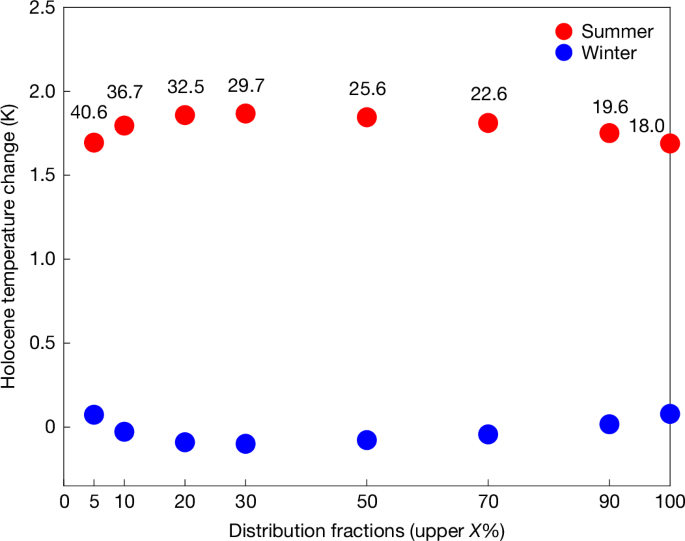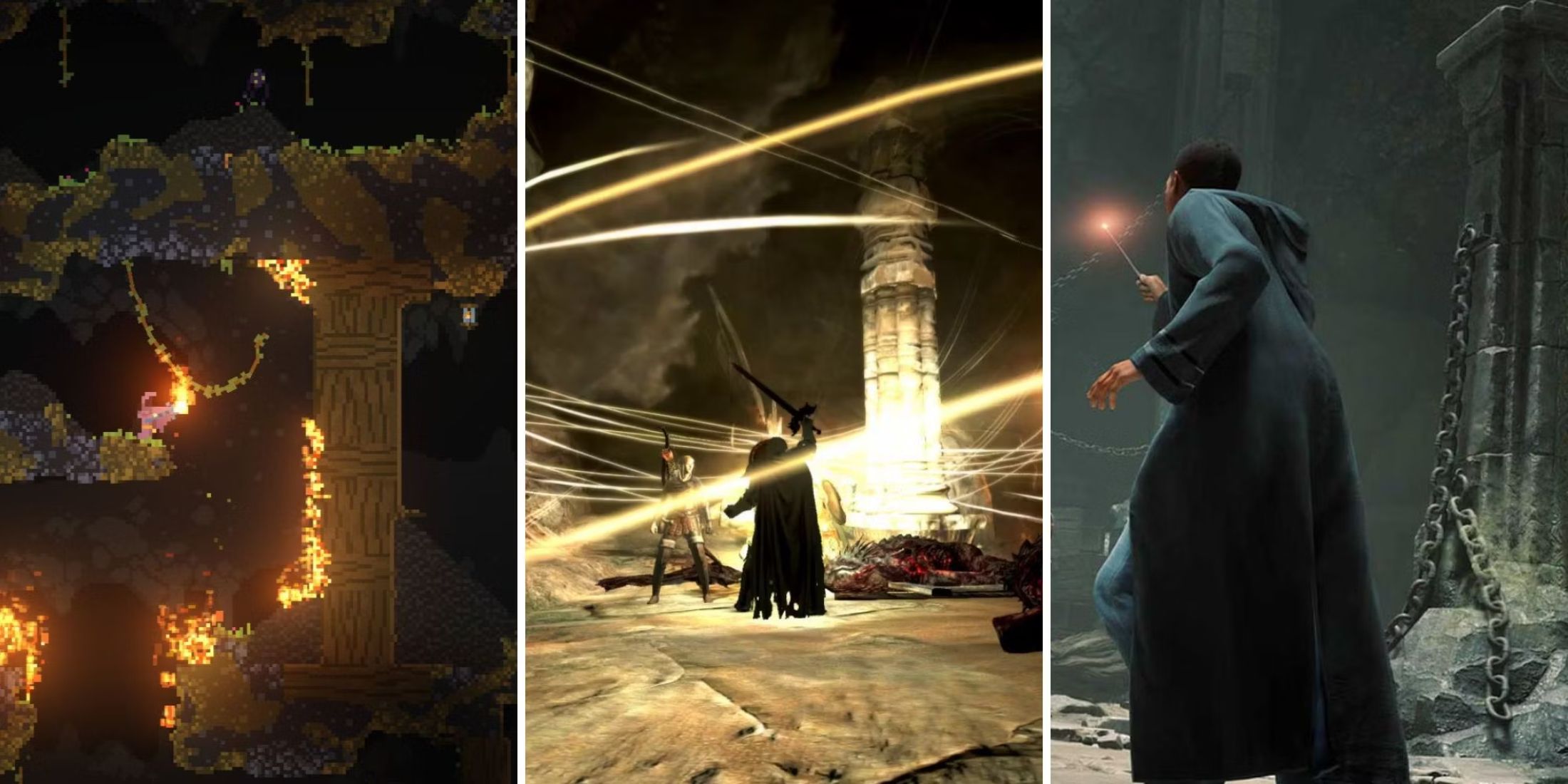UXDESIGN.CC
What is value, and how to define it for a product?
A deep dive into value, its layers, and how understanding can empower design and productteams.Have you ever encountered a conversation where terms like Whats the value it provides? or It doesnt align with the value we wish to offer our customers? are casually tossed around? If so, you are not alone. Many of usespecially within the professional worldare constantly grappling with the concept of value. Having traversed both sides of this question more times than I can count, I am inevitably led to the exact existential reflection: What is value, and how does one defineit?In the realm of business, value appears as both a ubiquitous and elusive force, as protean as it is pivotal. It is not a singular, fixed entity but rather a fluid and subjective notion that shifts depending on the lens through which it is viewed. For instance, the value of a product can differ vastly based on who is assessing itwhether its a senior executive, a product manager, or a designer all contributing to the same project. Each will interpret that value through a different prism, shaped by their roles, experiences, and priorities.In my experience, value operates on two distinct planes: personal and professional (ref. links below). Take, for example, the phone, the jacket, the car, or the streaming service you subscribe to. The value of these items differs depending on whether we examine them through the lens of our personal lives or our professional responsibilities. At a personal level, a products value might be driven by emotional satisfaction or utility, whereas at a professional level, it is often measured by strategic alignment, market appeal, and customer need. Value, in this sense, becomes a profoundly contextual and multifaceted construct.As a designer, hearing the term value spoken in a meeting or conversation piques my curiosity. I often ask for clarification, wondering how you define value in this context. What exactly do you mean when you say the design doesnt provide the value we seek? This seemingly simple question often remains unanswered, revealing a more profound uncertainty: Value is not always a straightforward or universally shared concept. It can be frustrating, especially when you are told after presenting a design solution: It still doesnt deliver the value we need for our customers/business. What, precisely, does that mean? The term value proposition is often invoked but leaves much unsaid. Ultimately, the definition of value remains elusivea moving target that shifts with the perspectives and priorities of the individuals involved.So, I find myself returning to this fundamental question: What is value? How do we define it so that it can be truly understood by all parties involved? The more I reflect on it, the more I realize that value is not merely a metric or a deliverable but a shared understandinga negotiation of perspectives, desires, and expectations. Perhaps the real challenge lies not in seeking a singular definition but in navigating the ever-shifting terrain of meaning that value occupies.Digging downThe Oxford Advanced Learners Dictionary offers four distinct dimensions for contemplating values complex and multifaceted nature, each of which illuminates the concepts intricate character. For instance, a painting by a renowned artist may have a high price tag (worth), but its cultural significance and aesthetic appeal make it invaluable to art enthusiasts. This understanding is rooted in a more transactional view, where value is often reduced to an exchange, a measurement of economic worth. However, while practical, this perspective reveals only part of the story, for the true nature of value cannot be captured solely by monetarymetrics.The second point of value pertains to its usefulness or importance. This view shifts our focus from the quantitative to the qualitativehow something serves a purpose, contributes to a greater good, or fulfils a particular need. It invites us to ask how much something costs, how it enhances life, becomes essential, and what role it plays in the larger tapestry of human experience. Here, value is less a number and more a function, an intrinsic utility that extends beyond the surface to the more profound realm of meaning andimpact.The third aspect presented by the dictionary introduces us to beliefsspecifically, the values that guide our sense of right and wrong, what is essential, and what ought to be upheld in life. In this light, value becomes a moral compass, shaping decisions and actions through the lens of our ethical convictions. These beliefs, deeply ingrained yet constantly evolving, influence how we assign meaning to our world, relationships, and the things we create. In the realm of belief, the true essence of value finds its moral and philosophical grounding, suggesting that value is not merely a reflection of subjective tastes but our collective sense of justice, responsibility, andpurpose.Finally, the dictionary touches on mathematics and measurement, acknowledging that value can indeed be quantified in some contexts. Whether through statistics, metrics, or precise calculations, this view seeks to translate value into something measurable, finite, and objective. Yet, even in this realm of measurement, there lingers an awareness that the quantification process is never without its own philosophical considerations. What do we choose to measure, and why? What is excluded from this calculus, and what does that omission say about our priorities?Value, in its fullest sense, is a complex and multifaceted concept that resists any single definition. It is not confined to the narrow bounds of monetary exchange nor to utility alone. It is an amalgamation of worth, usefulness, belief, and measurementeach dimension adding its own layer to the rich and complex nature of what we consider valuable. And it is in the interplay of these dimensions, the true depth of value is revealed, calling us to reflect on what we hold dear, what we seek to create, and what we deem worthy of our time, attention, andcare.In the world of product development, three conceptsbelief, value, and alignmentoperate at distinct yet interconnected levels. Belief is the philosophical foundation of any organisation or team; it is the set of guiding principles, the deeply held convictions about what is right and worthy. These beliefs, while abstract, inform everything that follows. Value, the second concept, represents the promise we make to our customers and the worth we aim to deliver through our products. It is the currency with which we engage the world, but like belief, its nature is not always easily captured or defined. Yet, it is in the alignment of these twobelief and valuethat true clarity emerges, for only when a companys core beliefs are in harmony with the value it seeks to offer can a product truly take form. This alignment is not just important; it is essential, for it shapes the development process, giving direction and purpose to every decision, every iteration.In my quest to understand value, I have immersed myself in countless books and articles, attempting to decipher its meaning and implications for product design. Traditionally, value has been defined in monetary terms as a useful, though narrow, lens through which to view the world. Though relevant in many contexts, this financial perspective falls short when applied to the digital landscape; in a world where intangible experiences, connectivity, and innovation reign supreme, value must be understood in broader, more nuanced terms. This expanded view of value pushes us to think not just about the immediate and the quantifiable but also about the longer-term impact and the deeper resonance our products can have with users. Such a perspective challenges us to adopt a more forward-thinking approach that is as much about possibilities as it is aboutprofits.In this broader sense, the concept of value has always existed, though we may only now be awakening to its full complexity. In my research, I repeatedly encountered references to FMCG (Fast-Moving Consumer Goods) and automobile industries, which have long championed defining and differentiating value. Take, for instance, the world of automobilesFerrari, Mercedes-Benz, VW, and Toyota. Though all producing cars, these companies cultivate a unique set of values. While the vehicles may share common platforms or underlying technologies, their value is distinctly different, shaped by the brands ethos, customer desires, and market positioning. Consider, for example, the Bentley Continental and the VW Phaeton: though they share the same platform, the experience they offer is worlds apart. This demonstrates the importance of understanding how a companys product values align with its customers expectations, for this alignment serves as the essential differentiator in a crowded marketplace. It allows a product to stand out and connect with its intended audience.In the digital product world, however, we encounter a unique challenge. While many frameworks and methodologies are availableframeworks that serve to organise and direct our effortsfew speak to the heart of what truly matters in this context: value. Years ago, I set out to explore how the concept of value could be applied to the digital domain. I sought inspiration from established industries, particularly the FMCG and automotive sectors, whose frameworks for defining value have evolved over decades. Yet, I quickly realised that these frameworks, though insightful, could not be directly transplanted into the world of digital products. The dynamics of digital product development, characterized by the rapid pace of change in technology and user behavior, and the often fluid nature of user engagement, demand a different approach, one more attuned to the digital ages complexities.During this exploration, I stumbled upon Peter Doyles Value-Based Marketing, a framework that resonated deeply with the needs of digital product teams. Doyles approach focuses not on the features and benefits of a product but on the values of the customerthe ethical, emotional, and psychological drivers that shape their decisions. It is a significant shift from a business-centric approach, which often gets mired in the minutiae of features, to a customer-centric one, which places the customers values at the centre of the product development process. In Doyles vision, marketing and product strategy are inseparable; a companys message, brand identity, and how it builds and markets its products must be infused with the values that resonate with its audience.For product and design teams, understanding what customers value is not merely necessary but foundational. It is the key to crafting a genuinely customer-centric product that resonates more deeply than any sales pitch or market analysis could capture. This understanding is not confined to quantitative data alone, though such metrics are invaluable. For instance, quantitative data might reveal that a certain feature is used frequently, while qualitative data might uncover the emotional reasons behind its popularity. By integrating both types of data in this way, a company can develop a values-based strategyone rooted in its mission and vision yet responsive to the ever-evolving needs of its users. It allows for creating products that meet customer needs and speak to their values, creating a lasting and meaningful connection.Ultimately, this approach calls us to go beyond the surface, beyond mere features and benefits, and to engage with the core of what our customers truly care about. In doing so, we are not merely creating products; we are crafting experiences, shaping relationships, and building a future that reflects the values we hold dear and the values that our customers seek to embody. In this delicate alignment of belief, value, and purpose, a products true potential is realised.Peter Doyles Value-Based Marketing framework posits that value is not a singular, static entity but a multifaceted concept unfolding across four distinct yet interconnected dimensions. It suggests that value, much like truth or beauty, cannot be fully grasped through a singular perspective; instead, it reveals itself through layers shaped by context, perception, and purpose. Each level serves as a lens to better understand how value is created, perceived, and ultimately exchanged in the marketplace.In contemplating the nature of value, we are faced with several dimensions that offer distinct yet interconnected lenses through which to assess a products worth. Each dimension serves as a different pathway toward understanding the more profound significance of what we create and offer to the world. (ref. linksbelow)Functional value invites us to consider the question: What does this product do? At its core, this dimension asks whether the product fulfils a specific need or solves a particular problem. It is the most tangible of values, grounded in utility and pragmatism. To understand its functional value is to understand its purposethe concrete, actionable result it provides its users. Yet, even in this utilitarian realm, we must remember that the true depth of value lies not simply in function but in how well the product addresses the needs it was/is designed tomeet.Financial value extends this inquiry into the realm of exchange. Is the product offered at a fair price? Here, we move beyond mere function and enter the domain of economics and fairness. Financial value questions the balance between cost and worth, reminding us that the price we ask of the user should reflect not only the material resources invested but also the intrinsic worth the product holds. It is a measure of equity, of how much we ask in return for what is provided and whether that exchange feels just and reasonable. Yet, it is also a measure of the invisible forces at play in our worldthe socioeconomic conditions, market dynamics, and human perceptions that govern how we assign financial value.Social value, in turn, shifts the focus toward connection and belonging. Does this product enable its users to connect with others? It speaks to our inherently relational nature, to the ways in which products serve as bridges between individuals and communities. Whether it facilitates communication, fosters collaboration, or expands the reach of social networks, social value is defined by how much a product allows us to scale our presence, influence, and connectivity in the world. It is a measure of how the product influences the social fabric, how it mediates our relationships with others, and how it enhances our sense of shared experience and collective meaning.Lastly, psychological value invites a more introspective reflection: Does this product enable the user to feel fulfilled? This dimension of value taps into the emotional and existential layers of human experience, asking whether the product addresses our inner needs for purpose, self-actualisation, and emotional well-being. It is concerned with the internal, subjective realm of satisfaction and meaning. Products that offer psychological value go beyond functionality, price, or social utility; they speak to our deeper desires for fulfilment, joy, and a sense of personal growth. They help us feel more complete, more aligned with our values, and more attuned to the sense of self we strive to cultivate.In essence, these four dimensions of valuefunctional, financial, social, and psychologicalare not merely distinct categories but interwoven threads in the fabric of the human experience. Each dimension reflects a different aspect of our lives, from the tangible to the intangible, from our material needs to our deeper yearnings. Together, they form a complex web of value, asking us to consider not just what a product does but also how it affects our relationships with others, how it situates us in the world, and how it resonates with our internal sense of purpose and fulfilment. This interconnectedness enlightens us about the multifaceted nature of value, making us realize that value, in its truest form, is not a singular, static thing but a dynamic interplay of purpose, exchange, connection, and meaningeach contributing to thewhole.If you wonder how to apply these models within the realm of B2B, it is important to remember that the question is not simply one of B2B or B2B. The commerce landscape is more nuanced and varied, with numerous frameworks that transcend the binary distinctions. These include models like B2B2C (Business-to-Business-to-Consumer), C2B (Consumer-to-Business), C2C (Consumer-to-Consumer), B2G (Business-to-Government), G2B (Government-to-Business), G2C (Government-to-Consumer), and P2P (Peer-to-Peer). Each model reflects a different way value is exchanged, shaped by the intricate relationships between various actorsbe they businesses, consumers, governments, or peers. Yet, amidst this complexity, one truth remains: no matter the model or the product, humans are always at the centre of the experience. Every product, whether conceived for a business or a consumer, will ultimately touch human lives, embodying and transferring value in ways that resonate with human needs, aspirations, and behaviours.In this context, as a designer or product creator, you must recognise that certain aspects of value may lie beyond your direct influence. For instance, financial value might be determined by the business team, whose decisions on pricing, cost, and profit margins will shape how the product fits within a larger economic framework. It becomes essential to understand the reasoning behind these financial choices. By aligning with the business teams perspective, you can better define and align the functional, social, and psychological values you, as the designer, have more direct controlover.The key is to realise that these values are not isolated but interdependent. The financial value set by the business team will influence how you approach the products functionality, its ability to create social connections, and the psychological resonance it carries with its users. Understanding the interplay between these dimensions allows you to craft a product that not only meets financial goals but also delivers on its deeper humanpurpose.Why havent I provided specific examples from my own experience? William Blake wisely noted, The true method of knowledge is an experiment. I encourage you to take this concept and experiment with it. Choose any digital productwhether it is the one youre working on or one you use dailyand attempt to identify the four types of value it provides. At first, you may struggle or feel blank in categorising these values, but dont be disheartened. Keep writing, refining, and reflecting. Over time, you will begin to see how these values take shape and gain clarity in your understanding of how value is created and communicated through the product. This experimentation will empower you and engage you in the learning process, enhancing your understanding of value assessment.Feel free to share your insights with me. If youd like to explore the concept of value further, I would be more than happy to engage in a deeper conversation. After all, the pursuit of understanding is not a solitary journey, but a shared one. We are all part of a community of learners, and your contributions to this shared journey are invaluable.ReferencesHere, I present a collection of references that guided my exploration of this subject. For those who seek a deeper understanding, I invite you to engage with these resources. Among them are links to books, though I must clarify that I do not stand to gain any monetary advantage should you choose to purchase them. Remember, the pursuit of knowledge is a journey meant to enrich the mind, not the wallet, and these resources are here to help you on that journey:)Value-based Marketing: Marketing Strategies for Corporate Growth and Shareholder Value, 2nd Edition by PeterDoyleValue-Based Marketing, Journal of Strategic Marketing by PeterDoyleValue First, Then Price: Building Value-Based Pricing Strategies by Andreas Hinterhuber), Todd C. SnelgrovePutting Soul Into Business by Mary Anne Harmer and TomHeringBuild a Culture of Good: Unleash Results by Letting Your Employees Bring Their Soul to Work by Scott Moorehead, Ryan McCarty, and Marshall GoldsmithBusiness Marketing: Understand What Customers Value by James C. Anderson and James A.NarusDefining value: the most ambiguous word in product development by JeffGothelfWhat is value, and how to define it for a product? was originally published in UX Collective on Medium, where people are continuing the conversation by highlighting and responding to this story.










